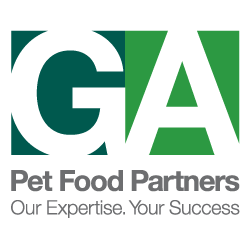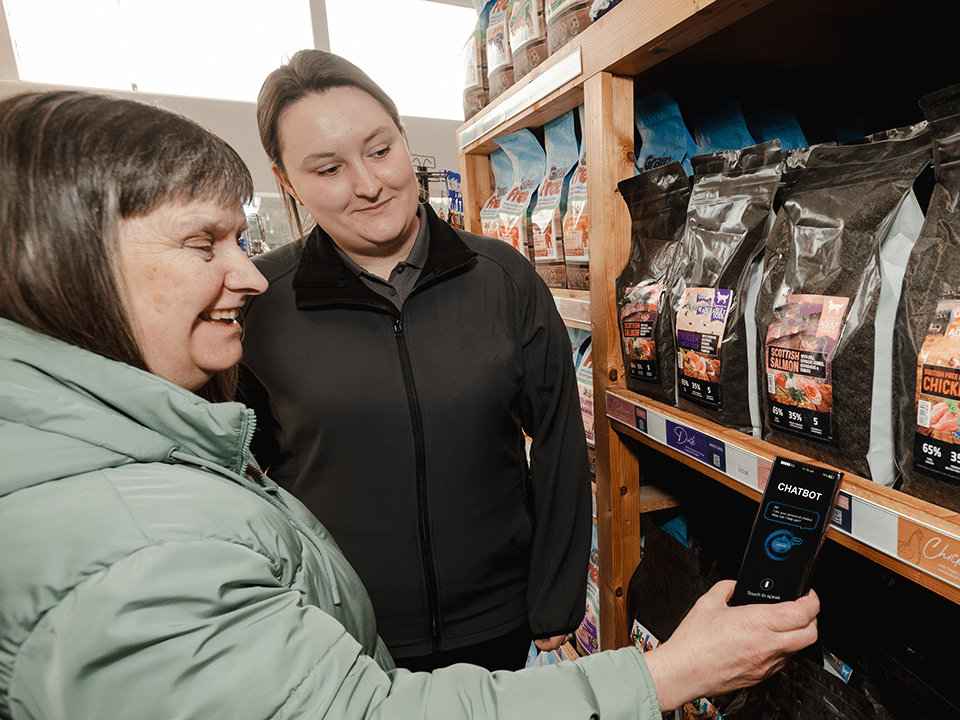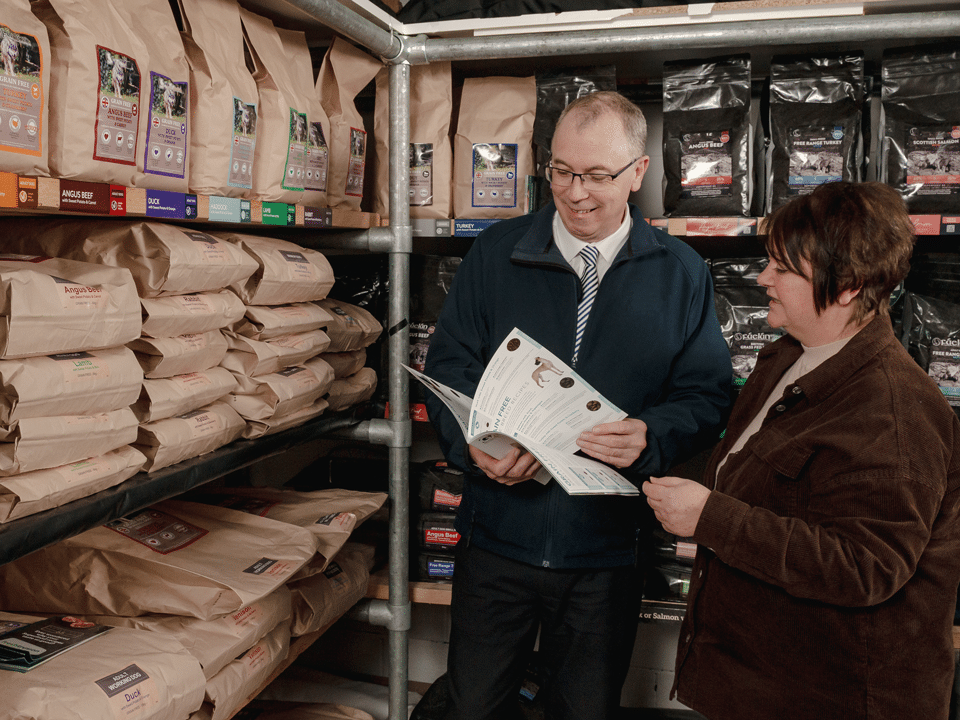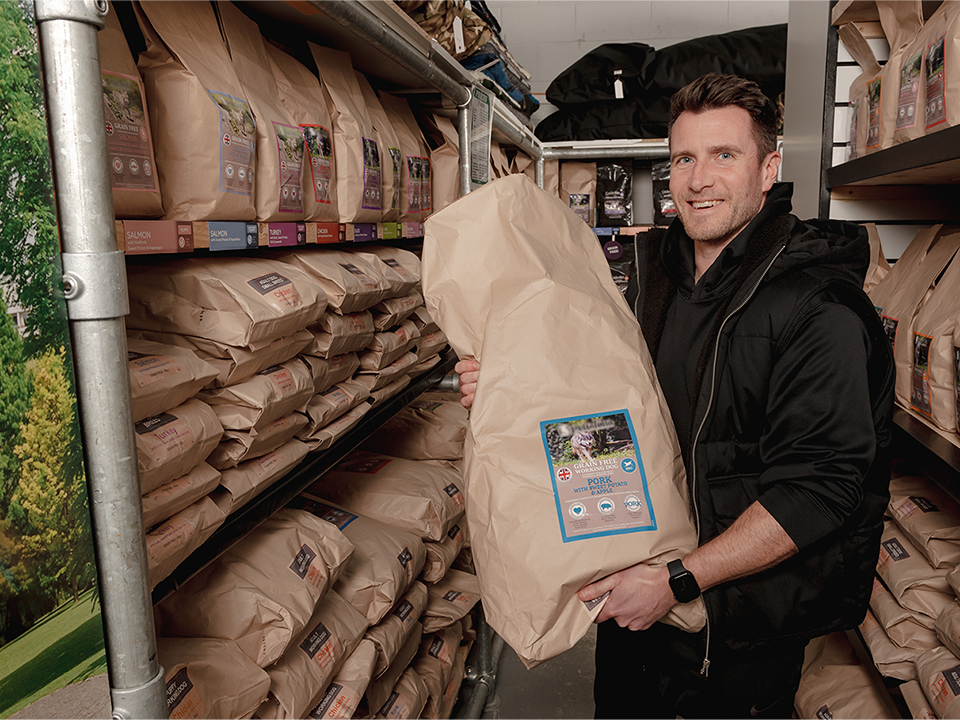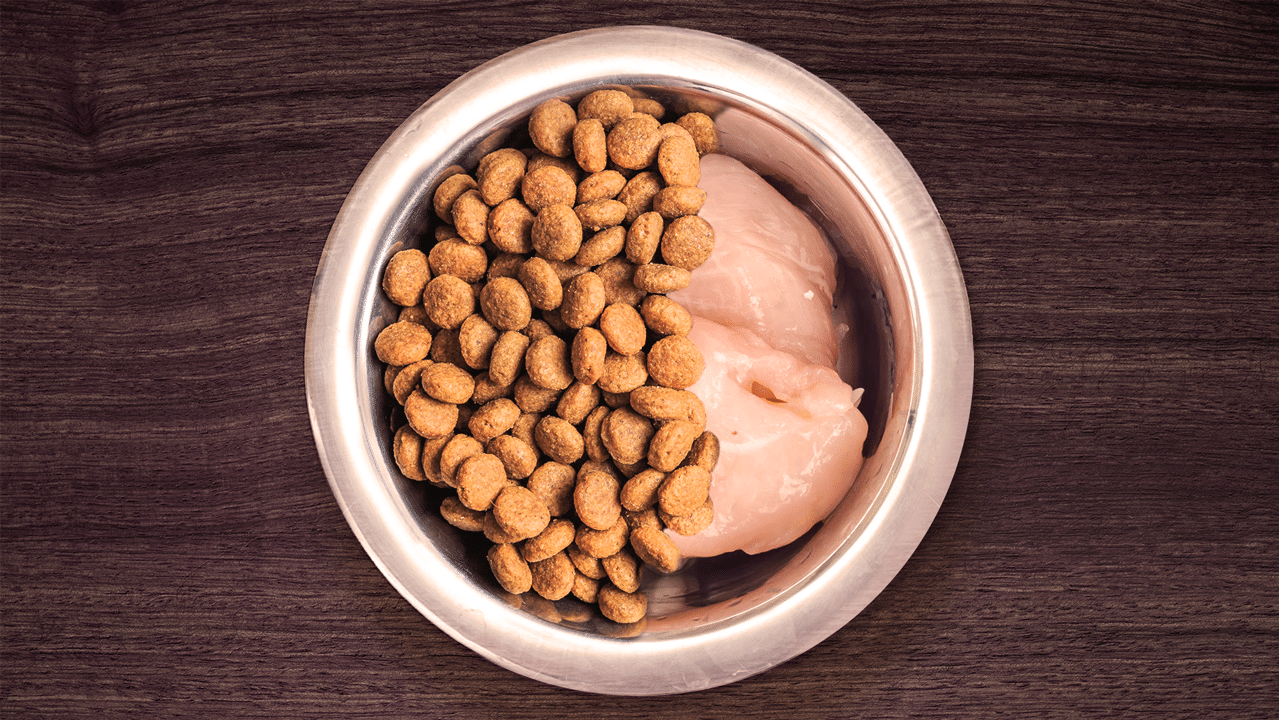
As pet food nutritionists, we often get asked what the difference is between raw pet food vs dry pet food. This post provides you with key information about the benefits of feeding dried kibble versus raw pet food.
Important Nutrition
Raw pet food can be purchased as a complete diet, but many owners choose to feed homemade raw as they believe it is better for their pets. Studies show that 95% of homemade diets were deficient in at least one essential nutrient. Whilst 84% were lacking in multiple nutrients (PFMA, 2020). Dodd et al. (2019) carried out a nutrient analysis of a homemade diet and the impact that this diet had when fed to a puppy. The results show that the diet was deficient in many nutrients as well as an incorrect balance of calcium and phosphorus which resulted in poor skeletal development.
Raw Risk
It has been identified that there is a risk to pet health from feeding homemade raw diets to pets if they are not nutritionally balanced for the specific species and life stage. It has also been identified that there is a risk to human health. When feeding a raw diet, the risk of infection from bacteria increases as both the pet and its owner can be directly exposed to foodborne pathogens. A study looked at 35 commercial raw pet foods and examined the products for contaminants such as salmonella, listeria and E.coli. The study reported that over half of the tested raw food was positive for at least one contaminant (Bree et al., 2018). The study concludes by stating that dry pet food is a safer option for pets and owners alike. The table below summarises the key differences between dry kibble pet food and raw pet food.
Dry
Low Moisture Content (around 8%)
Feed Small Quantities
Complete pet foods – meets pet’s nutritional needs in line with FEDIAF Nutritional Guidelines
Stable for an extended period of time as long as it is stored in a cool, dry place
Pets may drink more as the food is dry
Convenient
Raw
High Moisture Content (65% +)
Can be commercially made or homemade
Hygiene and cleanliness is important – a risk to human and pet health
Short shelf life once defrosted
Pets may drink less as the food is wet
Convenient in some formats (frozen, complete, raw)
It is not always easy to directly compare raw pet food vs dry pet food because of the difference in the physical state; therefore, it is important to calculate any values on the same “Dry Matter Basis”.
What is Dry Matter?
Dry matter refers to material that remains after the removal of water. The below tables compare the nutritional content of various raw diets to a kibble diet on an “As fed basis” and on a “100% Dry Matter Basis”. The Analytical Constituents can be compared equally by converting both products to the same dry matter.
Analytical Constituents on an “as-fed basis.”
Raw Diet A
Moisture: 70%
Oil: 9%
Protein: 12%
Fibre: 1%
Ash: 2%
Raw Diet B
Moisture: 64.6%
Oil: 15.7%
Protein: 14.6%
Fibre: 1%
Ash: 4.9%
Raw Diet C
Moisture: 74.9%
Oil: 5.8%
Protein: 14.4%
Fibre: 1.8%
Ash: 2.9%
Dry Diet A
Moisture: 8%
Oil: 16%
Protein: 28%
Fibre: 3%
Ash: 9.5%
Analytical Constituents on 100% Dry Matter Basis
Raw Diet A
Moisture: 0%
Oil: 30%
Protein: 40%
Fibre: 3.3%
Ash: 6.7%
Raw Diet B
Moisture: 0%
Oil: 44.4%
Protein: 41.2%
Fibre: 2.8%
Ash: 13.8%
Raw Diet C
Moisture: 0%
Oil: 23.1%
Protein: 57.4%
Fibre: 7.2%
Ash: 11.6%
Dry Diet A
Moisture: 0%
Oil: 17.4%
Protein: 30.4%
Fibre: 3.3%
Ash: 10.3%
There are many different pet food formats on the market which can sometimes make it hard to decide what is best to feed to pets. The most important message is that the quality of pet food should be measured on the contents of the food rather than the format that it is fed in.
References
Bree, F.P.J., Bokken, G.C.A.M., Mineur, R., Franssen, F., Opsteegh, M., van der Giessen, J.W.B., Lipman, L.J.A. and Overgaauw, P.A.M. (2018). Zoonotic bacteria and parasites found in raw meat-based diets for cats and dogs. Veterinary Record, 182(2), pp.50–50.
Dodd, S., Barry, M., Grant, C. and Verbrugghe, A. (2019). Abnormal bone mineralization in a puppy fed an imbalanced raw meat homemade diet diagnosed and monitored using dual‐energy X‐ray absorptiometry. Journal of Animal Physiology and Animal Nutrition.
Responsible Raw Feeding for Cats and Dogs. (n.d.). [online] Available at: https://www.pfma.org.uk/_assets/docs/fact-sheet/PFMA-fact-sheet-Raw-Feeding.pdf [Accessed 9 Oct. 2020].

Charlotte Stainer
GA Pet Food Partners Junior Pet Nutritionist
You may also like...
Article written by Charlotte Stainer
The pros and cons of AI in pet retail
You may have heard the letters "AI" or "AI Technology" frequently used in the media. From opening your phone with Face ID to interacting with [...]
